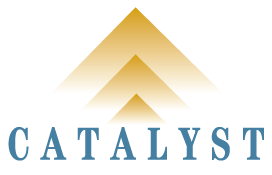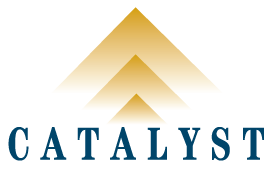-
Getting Traction for Innovation in the Legal Department
- May 1, 2019
- Category: Positioning and Strategy
- Publication: Legal Business World, Issue 4 (2019)
Most inside counsel lack key elements of technology literacy to acquire or customize and use applications that will make them more efficient or their clients more self-sufficient. The article poses six questions designed to help legal departments better understand their workloads, workflows and the relative complexity of the matters being worked on.
-
Innovation a Hot Topic at CCCA Conference
- April 17, 2019
- Category: Positioning and Strategy
- Publication: Canadian Lawyer In-House website
Most inside counsel lack key elements of technology literacy to acquire or customize and use applications that will make them more efficient or their clients more self-sufficient. The article poses six questions designed to help legal departments better understand their workloads, workflows and the relative complexity of the matters being worked on.
-
Beyond the Basics
- March 12, 2019
- Category: Managing Total Legal Spend
- Publication: Canadian Lawyer In-House, posted on the website on March 10th, 2019 and Legal Business World, Issue 3 (2019) on page 34
The article is a commentary on Quovant’s white paper “Legal Spend and Matter Management”. Four basic ideas are put forward: timekeeper authorizations, billing guidelines, alternative fee arrangements, and objective and subjective reviews of invoices. Catalyst Consulting suggests additional and more robust measures that step away from hourly rates for individual timekeepers; rely on the introduction of formal Records of Instructions; detailed legal project plans and budgets for individual matters; and fee arrangements that provide incentives to law firms for productivity, performance and innovation.
-
7 Critical Steps for a New Deal
- March 2, 2019
- Category: Managing Total Legal Spend
- Publication: Legal Business World Issue 2 (2019), at page 34
Successfully reducing legal spend in 2019 cannot take the form of a race to the bottom of the barrel for lower hourly rates. Seven critical steps are described: Secure 2 years’ worth of detailed data from law firms; prepare a multi-year forecast of requirements for external counsel; innovate in configuring primary and other firms by region with longer-term commitments; ensure Legal and Procurement professionals are proficient in non-hourly arrangements; apply optimal staffing patterns to individual matters; evaluate firms every 6 months against 4 KPIs; and have the CLO sign-off on a written project plan to implement the 6 previous steps.
-
The Global Legal Department in the Future
- February 6, 2019
- Category: Organization and Resources
- Publication: Legal Business World, Issue 1 (2019) and Lexpert, Vol. 15, No. 10, September 2014
The 5 stages of relationships between law departments and law firms, described in Heineman’s “Inside Counsel Revolution”, are summarized in the article. Very few companies have moved beyond panels of preferred law firms to a strategic integration with one or two primary firms. The article concludes that making longer term commitments to a handful of firms is a pre-requisite to non-hourly fees for portfolios of work and to significant innovation in legal service delivery that will change the behaviours of inside counsel and their primary firms.
-
Doing Metrics Right
- December 1, 2018
- Category: Performance Management
- Publication: Legal Business World, Issue 10 (2018) and Lexpert, Vol. 18, No. 5, April-May 2017
The article evaluates Counsel Links’ seven characteristics for good metrics. A four-part package to underpin proper metrics must include the department business plan, its budget, and the objectives and development plans for lawyers. However, only about 10% of legal departments have sufficient data that can be analyzed in a useful way.
-
The Hummingbird Lawyer
- November 30, 2018
- Category: Workflows and Workloads
- Publication: Legal Business World, Issue 9 (2018) and Lexpert, Vol. 20, No. 2, November-December 2018
A review of Gazzaley and Rosen’s The Distracted Mind: Ancient Brains in a High-Tech World applies some of the findings to in-house counsel. After dealing with an email, it takes the average worker 68 seconds to return to their work and remember what they were doing. The authors discuss FOMO, or “Fear of Missing Out”. Managing interruptions wth more discipline can generate about one hour of availability each day.
-
Poor Leverage Means Poor Service
- September 30, 2018
- Category: Organization and Resources
- Publication: Lexpert, Vol. 20, No. 1, September-October 2018
Planning and teamwork are essential to appropriate task delegation in legal work. Both law firms and law departments under-delegate and fail to rigorously oversee the use of experienced legal counsel.
Law departments face particular challenges moving away from solo practice models when have no entry-level lawyers available on the team. Team-based lawyering and tougher intake protocols are essential. -
Fixed Fees and Performance
- September 1, 2018
- Category: Managing Total Legal Spend
- Publication: Legal Business World, post December 2018; Legal Business World, Issue 9 (2018); and Lexpert, Vol. 18, No. 4, March 2017
Corporate clients should systematically request detailed matter budgets with the planning assumptions and hours by phase and task for each fee earner when the file is likely to exceed 50 hours. This is good, basic practice management.
The article suggests that putting more eggs in fewer legal baskets and making long term commitments of work to law firms makes it possible to introduce fixed fees for portfolios of work. It also removes barriers to introducing key performance indicators and to truly innovating in legal service delivery.
-
Innovation as a Performance Indicator
- August 1, 2018
- Category: Performance Management
- Publication: Legal Business World, Issue 8 (2018) and Lexpert, Vol. 16, No. 6, April 2015
Innovation as a stand-alone KPI accelerates discussion and action that can make a strategic difference to the company. Examples include greater self-sufficiency of business units, moving away from hourly to performance-based fees for external counsel, and raising the proficiency of the law department’s lawyers regarding leadership, business negotiations, and project management. The best innovations are dedicated to corporate projects and business unit priorities.
Articles on Demand – Archive

